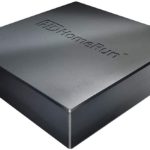ATSC 3.0 is on its way. This will replace the ATSC 1.0 standard we have had since 2009. There never was, nor ever will be an ATSC 2.0 due to the excitement from the developers about 3.0. So what’s the difference between ATSC 3.0 vs ATSC 1.0? Basically, ATSC 3.0 standard will allow you to interact with your TV in ways you could not before. I personally find it to be moreso appealing to advertisers than end-users. For example, you will be able to “Learn More” about a commercial product from the click of your remote. However, I don’t share the enthusiasm with the ATSC developers, and here’s why:
ATSC 3.0 Interactivity
TV has always been used as a pass time. The majority of people like to turn the TV on, find something within seconds, put the remote down, and relax. The more TVs become interactive, the less people want to watch them. At least in my observation. We have phones, tablets, iPads, and computers for interactive media. And many of us are already annoyed by ads. So to be able to interact with commercials on a TV seems retroactive to me. I see it as being another useless feature of Smart TVs. But that’s just me, perhaps. So, one of the biggest differences between ATSC 3.0 vs ATSC 1.0 is that we will be able to interact with commercials just like on our phones.
ATSC 3.0 needs the Internet
Furthermore, ATSC 3.0 vs ATSC 1.0 is that ATSC 3.0 will require an internet connection for use of some of the features. It is unclear at this time if ATSC 3.0 will work at all WITHOUT internet. So I highly dislike the lack of transparency of this new technology announcement. Not all antenna program viewers have or want the Internet outside of their phones. Some people are still unable to get Internet Access in rural and remote areas. And most elder clientele does not like complicated technology. Ironically, over 25% of antenna viewers are over 65 years old. The majority are families with young children living in the home.
What’s more? It’s already being tested in many broadcast regions. And to date, you need the newest HDHomeRun DVR box or a newer Sony TV in order to get the ATSC 3.0 Stations. As a technician, I was able to tune them in on a Sony TV for a customer in the summer of 2021. However, to great disappointment, all of the ATSC 3.0 stations came in blank.
Furthermore, the Sony TV I was tuning, preferred the ATSC 3.0 stations over the regular ATSC 1.0 stations. The TV also automatically deleted the ATSC 1.0 networks and left ABC, NBC, CBS, and Fox networks on the blank ATSC 3.0 channels. It took me a few minutes to figure out what was going on, but I eventually figured out that you have to go into the Channel Manager of the Sony menu and select the ATSC 1.0 channels and deselect the ATSC 3.0 channels. What’s more, there is no way to know the difference between the channels. One just has to assume the blank channels selected were all ATSC 3.0 and deselect them.
Do I have to use ATSC 3.0?
And as you may have figured out by now, you will need to eventually upgrade your TV to a new ATSC 3.0 standard or get an external compatible tuner box. This will be much like the 2009 transition from analog to digital. Except, we will be transitioning from ATSC 1.0 digital to ATSC 3.0 digital. But don’t worry, it will be a few years before they get the bugs worked out. Plus, TV stations still have to broadcast in ATSC 1.0 for a minimum of 5 years after the tech is ready. However, judging by how long many of them kept analog broadcasts even after the 2009 digital switch, the Transition will likely be between a 10-15 year full transition. So as you can tell, I am not impressed with ATSC 3.0 at all.
Anyways, ATSC 3.0 is something to consider when buying a new TV in the future. As of to date, Sony is the only one with built-in ATSC 3.0. And I do not have Sony TVs at the top of my list for cord-cutters for various reasons. Regardless, don’t let any of this scare you away from cutting the cord or from buying any new TV you want. It’s all part of the process of a society moving forward. Growing pains are a part of our advancing technological age. Furthermore, the Cable and Satellite providers will likely incorporate their own versions of interactive TV as well. So you are still ahead of the game by at least not having to pay a monthly bill with an antenna. At least you won’t have a high recurring bill to be annoyed by commercials in a whole new way.
Common ATSC 1.0 and ATSC 3.0 Questions
No. You will not need a special ATSC 3.0 TV antenna to get the new signals. In fact, watch out for deceptive marketing. I already see advertisements from manufacturers claiming that their antennas are ATSC 3.0 compatible. Of course, they are. But so is a paperclip. So don’t fall for the advertising jargon.
You may continue using the current antenna you have or purchase any new one that will work fine as long as you are within range of the TV signal. Most good outdoor antennas can only pull in TV signals from about 50 miles away or less.
An indoor antenna can only get stations from 20 miles or less at best. Keep this in mind too. Don’t believe the 100, 200, 300, 400+ mile range nonsense either. Yes, marketers blatantly lie and deceive consumers. The FTC does not care as long as the price and quantity are accurate. Not sure which antenna to buy? Find out which antenna to use.
TVs
- SAMSUNG 55-Inch Class Neo QLED QN90A Series – 4K UHD Quantum HDR 32x Smart TV (QN55QN90AAFXZA, 2021 Model)
- Sony A80J 65 Inch TV: BRAVIA XR OLED 4K Ultra HD Smart Google TV XR65A80J- 2021 Model, Black
- LG OLED G1 Series 65” Alexa Built-in 4k Smart OLED evo TV (OLED65G1PUA, 2021)
- LG OLED GX Series 65” 4k Smart TV (OLED65GXPUA, 2020)
DVRs
-

HDHomeRun DVR ATSC 3.0 Flex 4k SiliconDust HDHomeRun Flex 4K ATSC 3.0 NextGen TV: 2/4 Tuners HDFX-4K
Prior to COVID-19, the rollout for ATSC 3.0 testing was supposed to take place in 2020. However, due to the pandemic, there were many delays. Originally, the FCC set an initial date requiring all broadcasters to keep ATSC 1.0 signals until 2023. Yet, because of all of the delays, many of the testing broadcasts are just now rolling out since 2021 and still in 2022.
There are many bugs to work out yet. So no one should expect ATSC 1.0 to drop anytime soon. And when you compare the digital transition of 2009 to the ATSC 3.0 transition of 2022, one could even assume that ATSC 1.0 may stay on the air for up to 15 years in some locations. It would not be in the best interest of broadcasters to cut off their viewers without proper time to Transition over.
Yes ATSC 1.0 has always supported 1080p high definition HD digital TV. The newer ATSC 3.0 will support up to 4k TV signals. However, currently, ATSC 3.0 is only in test mode at a handful of locations. Many ATSC 3.0 newer broadcasts will still transmit on 1080p and less.
As of now, I cannot confirm or deny if ATSC 3.0 will have any difference on TV reception vs ATSC 1.0. However, as a field technician, I can confirm that the ATSC 3.0 appears identical to the ATSC 1.0 signals when it comes to 6mhz bandwidth channels that TV stations broadcast on. I do detect 3.0 signals all the time on my signal meter. In contrast, I am yet to see a successful ATSC 3.0 signal on a TV screen as they work out the bugs. So if the ATSC 3.0 signals are supposed to be improved, then they would have to be doing it within the same gap of bandwidth they have always had for the ATSC 1.0 channels. As a technician though, I cannot detect the signal differences.
I will update this section if I see any difference. As of now, don’t count on ATSC 3.0 signals being better. In fact, hypothetically they might be a little worse. If the broadcasters have to compress the 3.0 signals down to tighter spaces than 1.0, then it is highly likely the signals will be worse. Sending more information in the same bandwidth leaves less room for error and more possible pixelation. Stand by for confirmation or denial of this concern. I will share my experiences after I have some more real-world testing performed.
Yes. When you buy a newer TV with built-in ATSC 3.0, the TV will still tune in the older ATSC 1.0 signals. In contrast, the ATSC 1.0 existing TVs will not be forward compatible. The ATSC 1.0 TVs won’t be able to tune in the newer 3.0 signals.


Thank you!
Hi Jeramie,
Thank you for the well written article with excellent information, especially regarding antennas. As a recently retired RF engineer with many years of experience in antenna design, it is refreshing to read an article from someone who actually knows what they are talking about. keep up the good work.
“It is unclear at this time if ATSC 3.0 will work at all WITHOUT internet.”
It works great without the internet. Internet is a component that can be used to receive enhanced services, but is not required to receive NextGen TV.
1. ATSC 1.0 was adopted by the FCC in 1996. The transition started on 10/31/1998. The analog NTSC standard went off the air in 2009.
2. There was an ATSC 2.0. It did not gain adoption.
1. ATSC 1.0 was adopted by the FCC in 1996. The transition started on 10/31/1998. The analog NTSC standard went off the air in 2009.
2. There was an ATSC 2.0. It did not gain adoption.
3. ATSC 3.0 does NOT require the Internet to watch TV. It does require a return channel if you want to use the interactive features.
4. The primary differences between 1.0
and 3.0 are:
a) 1.0 uses 8VSB modulation using MPEG-2 transport streams. 3.0 uses OFDM modulation with the complexity varying on whether the broadcaster wants higher nitrates or more reliability for functions like mobile/handheld, and its IP based, which makes it directly compatible with WiFi and internet transmissions.